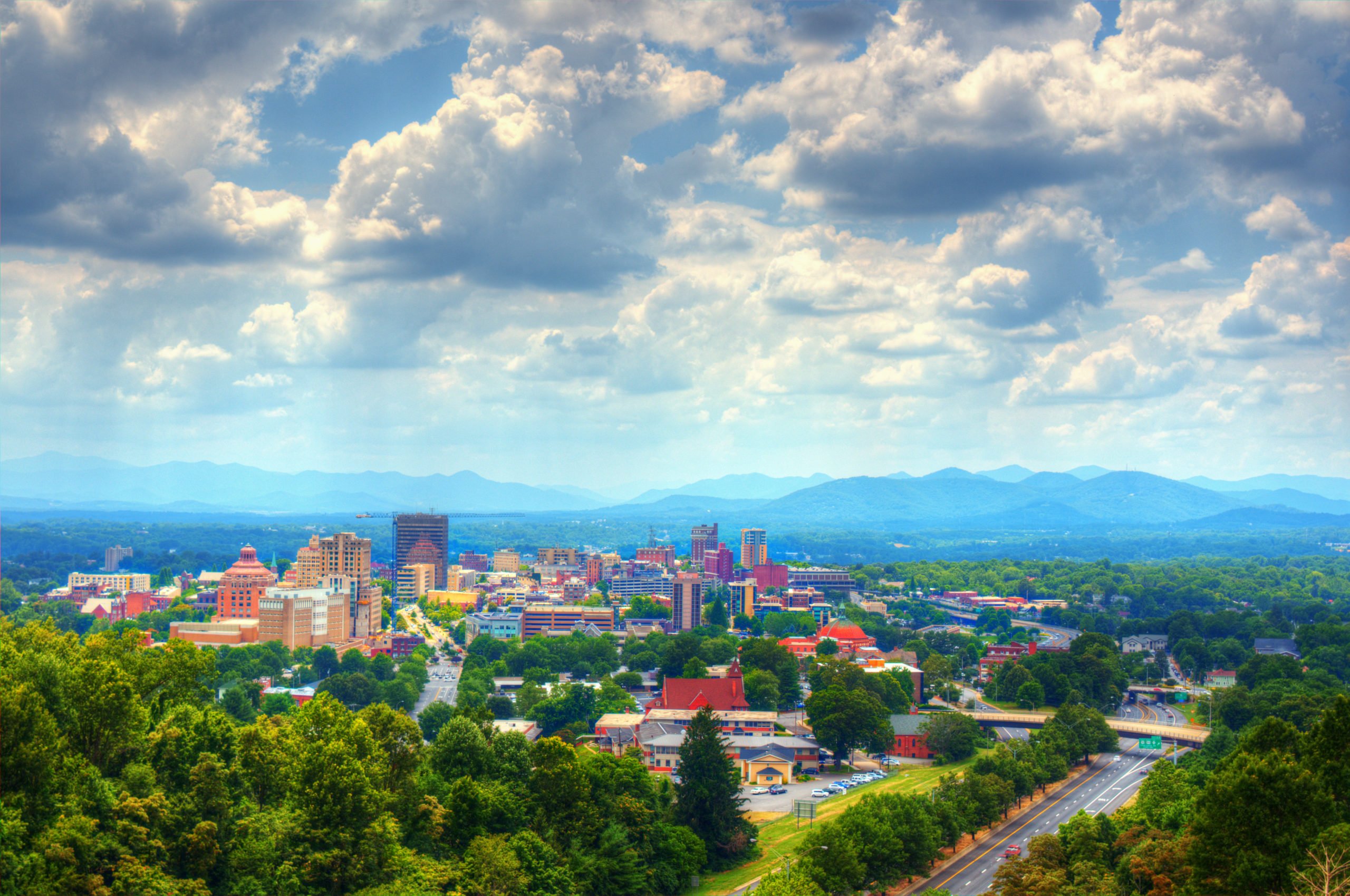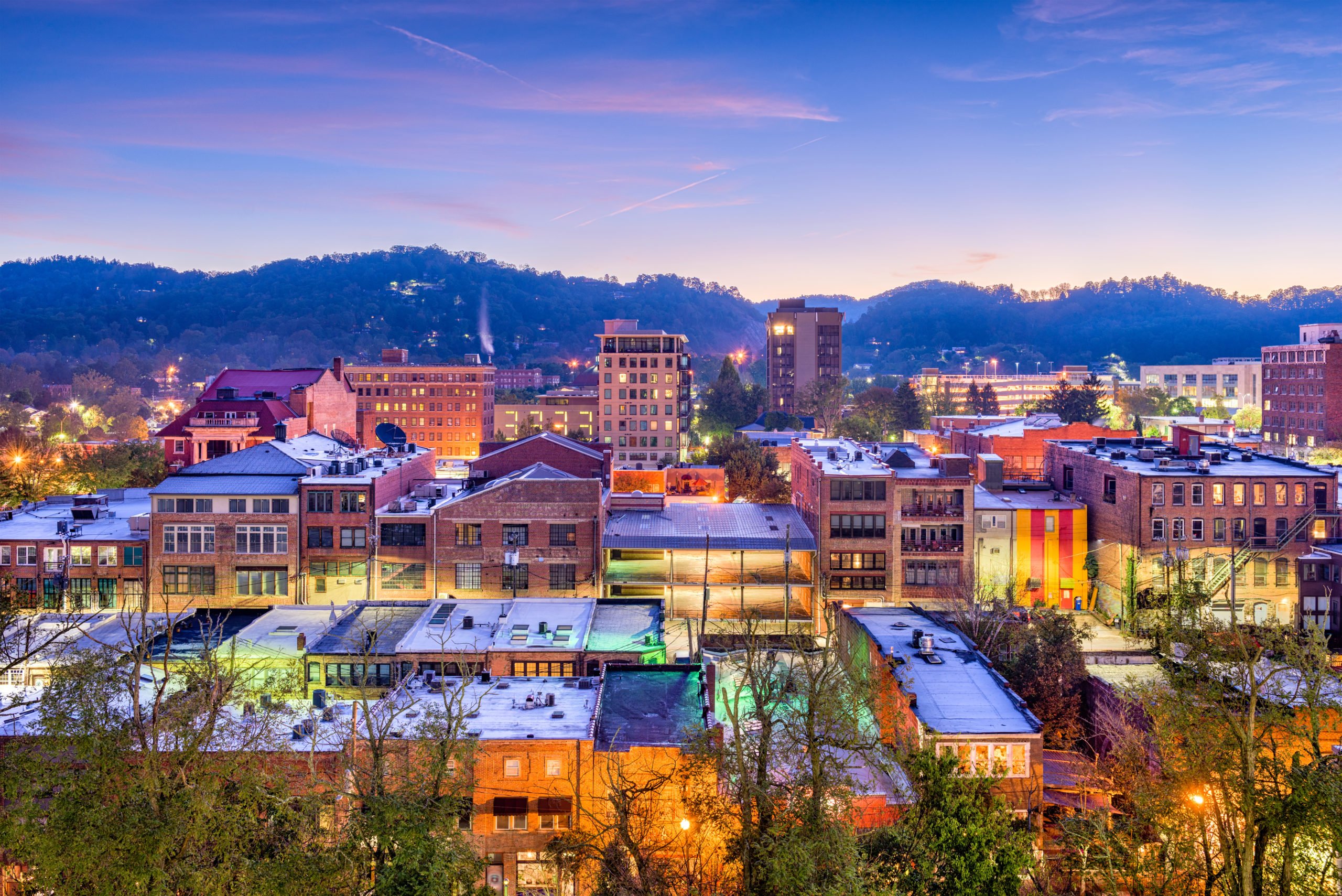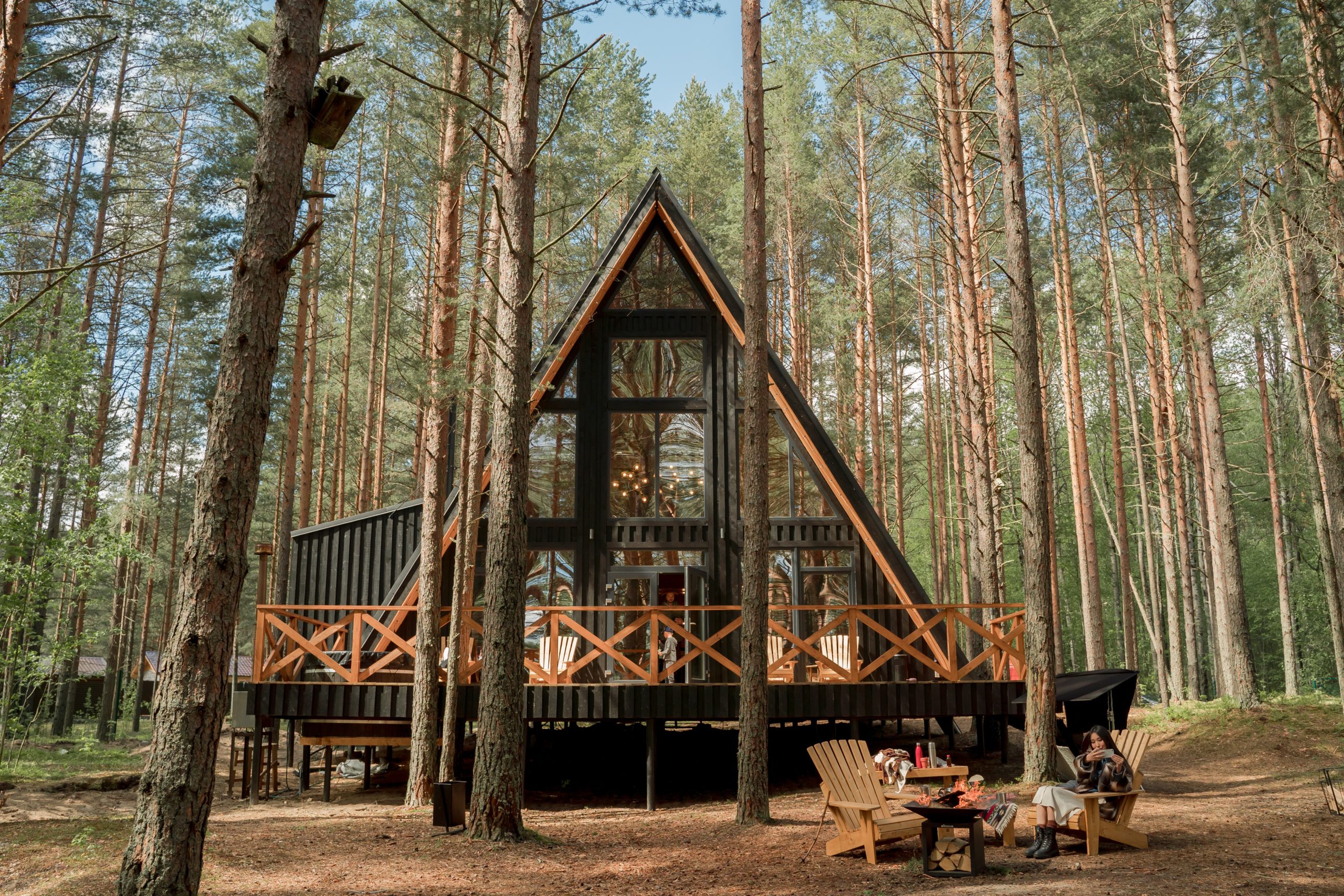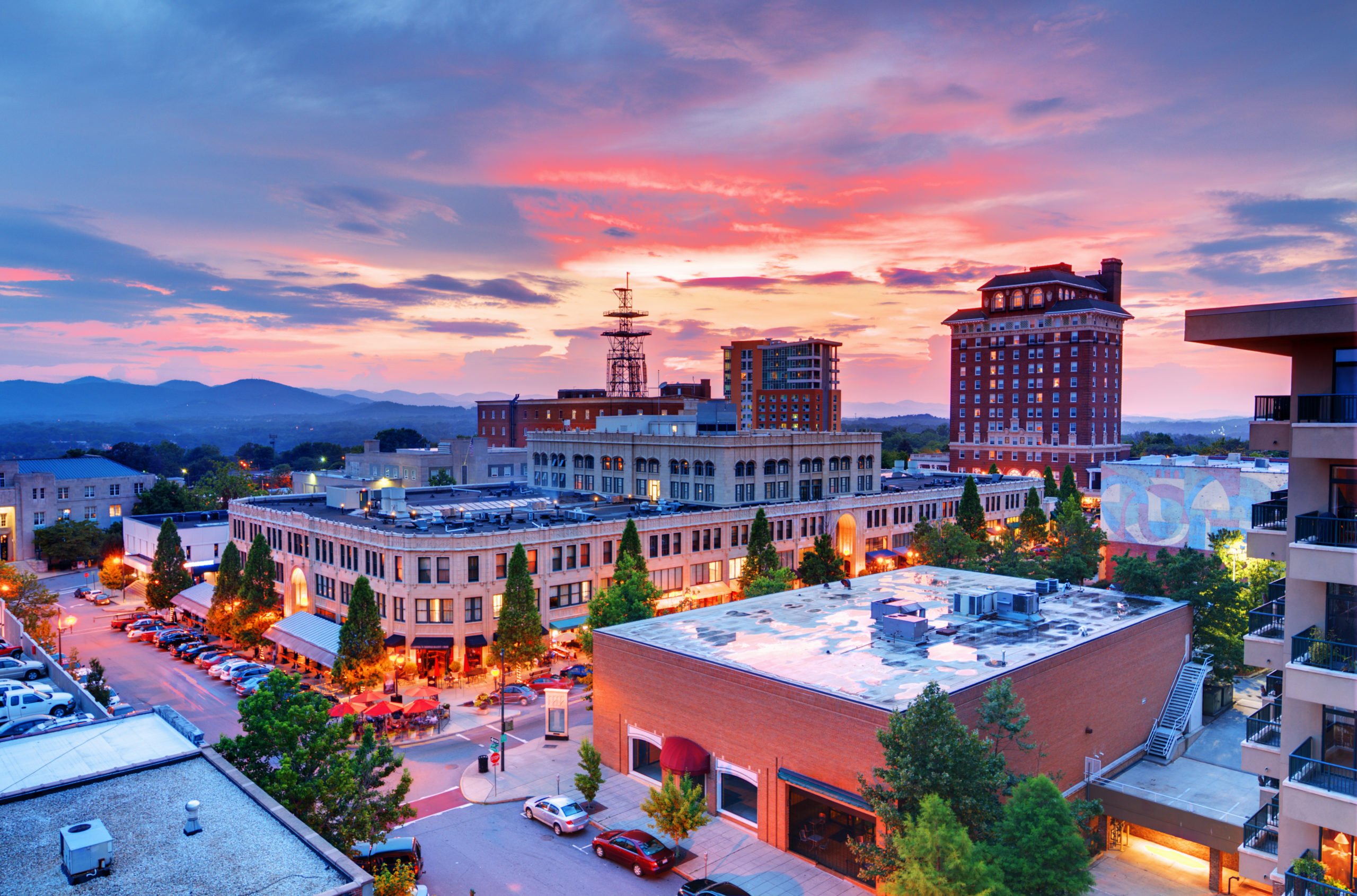
22 Things to Know Before Moving to Asheville North Carolina
Moving to Asheville, North Carolina? Here are some tips and pros and cons to consider before making the move.
- Rapid Growth Is Causing Rapid Change
Asheville has been experiencing significant population growth in recent years, making it a popular destination for people looking for a new place to call home. The city’s population has increased by more than 10% over the past decade, and projections show that this trend is likely to continue. With a current population of just over 92,000, Asheville offers a vibrant and diverse community with plenty of opportunities for growth and development.
One of the main drivers of Asheville’s population growth is the city’s thriving job market, which has attracted many young professionals and families to the area. Asheville is home to a wide range of industries, including healthcare, technology, and tourism, providing residents with a variety of job opportunities. Additionally, Asheville’s strong arts and culture scene and its outdoor recreation opportunities are also major draws for new residents.
As the population grows, many parts of the town will change as well. The entire area has experienced real estate price increases, but specific neighborhoods have appreciated much faster than others. It’s been great for home sellers and tough on home buyers over the last few years.
While population growth has its benefits, it also brings some challenges, such as increased traffic, rising housing costs, and greater demand for resources.
- Neighborhood Vary Considerably
Asheville is home to a wide variety of neighborhoods, each with its own unique character and charm. From historic homes to modern developments, Asheville’s neighborhoods offer something for everyone. Some of the most popular neighborhoods in Asheville include:
- Downtown Asheville: With its vibrant arts and culture scene, lively nightlife, and trendy restaurants and shops, downtown Asheville is a popular destination for residents and visitors alike.
- West Asheville: Located just across the French Broad River from downtown, West Asheville is a hip and eclectic neighborhood known for its vintage shops, music venues, and community-focused events.
- Biltmore Village: Located near the historic Biltmore Estate, Biltmore Village is a charming and upscale neighborhood with tree-lined streets, boutique shops, and restaurants.
- Montford: Known for its historic homes and tree-lined streets, Montford is a popular neighborhood for families and professionals looking for a quiet and picturesque place to call home.
Another important consideration is that Neighborhoods in Asheville, such as the ones mentioned above, offer vastly different experiences based on their elevation and proximity to the mountains.
- Dry Climate
Asheville’s climate is generally mild, with four distinct seasons. However, the city is known for its relatively dry climate, with an average annual rainfall of just over 45 inches. This dry climate has both advantages and disadvantages for residents.
On the one hand, Asheville’s dry climate means that residents can enjoy plenty of sunny days and outdoor recreation opportunities throughout the year. However, it also means that the city is prone to wildfires, particularly during the dry summer months. Additionally, the dry climate can exacerbate certain health conditions, such as asthma and allergies.
To me, the air is clean and crisp in Asheville. I’ll never forget the first time I flew into town and the doors of the airport opened. When I walked outside, the temperature was the same outside as inside the airport.
Coming from Florida, this was a brand new experience. The humidity and heat in Florida are extreme and oppressive in every season. Most people rush from their car to a building to be saved by climate-controlled air. However, I immediately fell in love with the crisp, calm atmosphere here.
You may be also interested in these posts:
- 3 Things to Know Before Moving from Florida to Asheville
- 5 Reasons Why People are Relocating from California to Asheville
- Water Issues
Despite its dry climate, Asheville has not experienced significant water issues in recent years. The city has a reliable and high-quality water supply, sourced primarily from the pristine forests and mountains surrounding the city.
However, like many cities, Asheville is facing challenges related to water conservation and management. The city is working to reduce water usage through a variety of measures, including education and outreach programs, water efficiency rebates, and infrastructure upgrades.
- The Snow is Very Mild
While Asheville does see some snowfall each winter, it is generally mild compared to other parts of the country. The city typically sees an average of around 15 inches of snow per year, with the heaviest snowfall occurring in January and February.
The weather in Asheville’s mountains in much less harsh than out west and up north, and those coming from these areas will appreciate Asheville’s mild snowy season.
If you have snow tires or all-wheel drive, there’s minimal threat of sliding around. Even without snow tires, the conditions are generally good throughout the winter. Some winters, we hardly get any snow at all.
For residents who enjoy winter sports, Asheville’s proximity to the mountains provides plenty of opportunities for skiing, snowboarding, and other winter activities. However, for those who prefer warmer weather, Asheville’s relatively mild winters may be a major draw.
- Mountain Life
Asheville is nestled in the Blue Ridge Mountains and offers endless opportunities for outdoor enthusiasts. With hiking, camping, fishing, and biking, there is something for everyone. The Pisgah National Forest and the Great Smoky Mountains are both a short drive away and offer some of the most breathtaking views on the East Coast. The region also has a rich history of music and arts, with numerous festivals throughout the year celebrating everything from bluegrass to pottery.
- Fashion Is Not A High Priority
Asheville’s style, if it has one, blends urban chic with mountain casual. Dressing up for a night out is not uncommon, but neither is a relaxed outfit of jeans and a flannel shirt. The city is also home to many locally-owned boutiques and shops that offer unique clothing, jewelry, and accessories. I love our lack of fashion and “anything goes” attitude towards it.
- Dress in Layers
With the mountain climate, weather can be unpredictable and temperatures can fluctuate throughout the day. It is important to dress in layers, so that you can easily adjust to the temperature changes. Wearing a light jacket or sweater is recommended, even in the summer months.
- Marijuana
North Carolina has not yet legalized recreational marijuana, but the state does have a medical marijuana program. Asheville has a reputation for being a liberal and progressive city, with many residents advocating for the legalization of recreational marijuana. However, it is important to note that possession and use of marijuana is still illegal under federal law.
- Our Restaurant Scene is Thriving
Asheville has become known for its vibrant food scene, with many high-quality restaurants offering a wide range of cuisine. From farm-to-table eateries to international cuisine, there is something for everyone in Asheville. Here are some popular restaurants to check out:
- Curate: A Spanish tapas restaurant that has been featured on the Food Network’s “The Best Thing I Ever Ate.”
- Buxton Hall Barbecue: A popular spot for classic Southern barbecue.
- White Duck Taco Shop: A casual eatery serving up unique and tasty taco creations.
- Rhubarb: A farm-to-table restaurant with a focus on seasonal ingredients and craft cocktails.
- Tupelo Honey: A Southern-inspired restaurant known for its brunch and fried chicken.
- The Blue Ridge Parkway Never Stops Inspiring
The Blue Ridge Parkway is a scenic drive that stretches 469 miles from Virginia to North Carolina. It passes through Asheville and offers breathtaking views of the Appalachian Mountains. The Parkway is known for its hiking trails, waterfalls, and overlooks. It’s a must-see for anyone visiting or living in Asheville.
- Real Estate Is Crazy
Asheville’s real estate market has seen a significant increase in demand in recent years. While this means prices have gone up, it also means there is a variety of housing options available. From historic homes in the downtown area to new developments in the suburbs, there is something for every budget and preference. It’s recommended to work with a local real estate agent who can provide insight into the market and help you find your perfect home.
- Residents Enjoy Being Healthy
Asheville is known for its focus on health and wellness. The city has a variety of health food stores, fitness studios, and alternative health practitioners. There are also many opportunities for outdoor recreation, such as hiking and biking trails. Additionally, Asheville is home to several hospitals and medical centers, providing quality healthcare options for residents.
15. New Development
Asheville is experiencing a boom in new development, with a number of new housing developments and commercial projects in the works. One major development that’s currently underway is the RAD (River Arts District) Lofts, a mixed-use development that includes apartments, retail space, and artist studios. Another notable development is the East Asheville Village, which features a mix of apartments, townhomes, and commercial space. While the influx of new development can bring benefits such as increased job opportunities and improved infrastructure, it can also lead to concerns about overcrowding and gentrification in some areas.
Related blog posts:
- District Brewery: New Condo Development In Asheville, NC
- The Haywood: What’s Going on with Downtown Asheville’s Newest Condo Project?
- Traffic is Not Bad, In Comparison
Asheville’s traffic can be a challenge at times, especially during peak tourist season. The city is known for its narrow and winding roads, which can be difficult to navigate for drivers who are not used to the terrain. Additionally, many of the city’s main roads can become congested during rush hour, leading to frustrating commutes. To combat traffic, some residents opt to bike or walk to their destinations, while others take advantage of the city’s public transportation options. However, if you are coming from a major metro area, the traffic may not seem as harrowing.
- Comparison to Charlotte
Asheville is often compared to Charlotte, which is the largest city in North Carolina. While both cities have their own unique charms, Asheville is known for its laid-back, bohemian vibe and focus on the arts, while Charlotte is known for its thriving business community and cosmopolitan feel. Asheville is also significantly smaller than Charlotte, with a population of just over 90,000 compared to Charlotte’s population of over 900,000.
- Road Construction
Like many growing cities, Asheville is constantly undergoing road construction projects to improve infrastructure and ease traffic congestion. While these projects can cause temporary disruptions and delays, they ultimately help to improve the city’s transportation network and make it easier to get around. Some of the major road construction projects in Asheville currently include the I-26 Connector Project and the widening of Hendersonville Road.
- We Love Our Dogs
Asheville is often referred to as a “dog city” due to its pet-friendly culture and amenities. Many businesses, restaurants, and parks in Asheville welcome dogs, and the city has several dog parks, pet stores, and veterinary clinics. Additionally, Asheville hosts several dog-friendly events throughout the year, including the annual Woofstock festival, where dogs and their owners can enjoy live music, food, and activities together.
Some of the most popular dog parks in Asheville include:
- French Broad River Dog Park: Located on Amboy Road, this dog park has plenty of space for dogs to run around, and there is even a small beach area where dogs can swim in the river.
- Azalea Road Dog Park: This park, located in East Asheville, has separate areas for large and small dogs, and there is plenty of shade for hot summer days.
- Asheville Dog Park at Aston Park: Located in the heart of downtown Asheville, this dog park has separate areas for small and large dogs, as well as plenty of benches for owners to relax while their dogs play.
- Martin Luther King Jr. Park: This park, located in West Asheville, has a small dog park area with separate sections for large and small dogs.
- Wind
Asheville can experience some strong winds, especially during the fall and winter months. While the winds are usually not severe enough to cause significant damage, they can be a bit of a nuisance and make it difficult to spend time outdoors on particularly blustery days. It’s always a good idea to check the weather forecast before planning any outdoor activities.
- Landscaping
Landscaping in Asheville, NC can be quite varied, as the region experiences all four seasons and a variety of weather patterns. Moreover, when the elevation in your city varies by 1,500 feet depending on where you live, the chances are high that vegetation requirements will be complicated.
One popular landscaping feature is the use of native plants, which can be drought-tolerant and require less maintenance than non-native species. Many homeowners also choose to incorporate elements of the surrounding natural environment, such as boulders, trees, and natural water features, into their landscaping.
Asheville is also known for its historic homes and neighborhoods, which may have more formal, traditional landscaping designs. However, many modern homes and neighborhoods also incorporate more contemporary landscaping features, such as xeriscaping or rock gardens.
Overall, landscaping in Asheville tends to prioritize natural beauty and sustainability, and there are a variety of resources available for homeowners looking to design and maintain their outdoor spaces. The Asheville Botanical Gardens and the NC Cooperative Extension offer helpful tips and resources for landscaping with native plants, while local nurseries and landscaping companies can provide guidance on design and maintenance.
- Yes, We Have Bears
Asheville is home to black bears, which are typically shy and avoid humans. However, it’s important to be aware of their presence and take precautions to avoid conflicts. If you live in an area with bears, it’s important to properly secure your trash cans and compost bins, as well as bird feeders, grills, and pet food, as these items can attract bears. It’s also recommended to keep a respectful distance if you encounter a bear, and never approach or feed them. Additionally, if you enjoy hiking or spending time in the outdoors, be sure to familiarize yourself with bear safety tips, such as making noise to alert bears to your presence, carrying bear spray, and knowing how to react if you encounter a bear. By taking these precautions, you can help ensure a safe coexistence with bears in Asheville.




